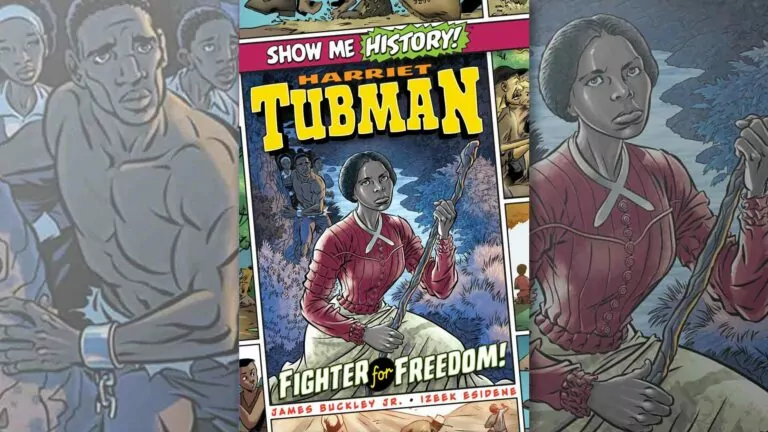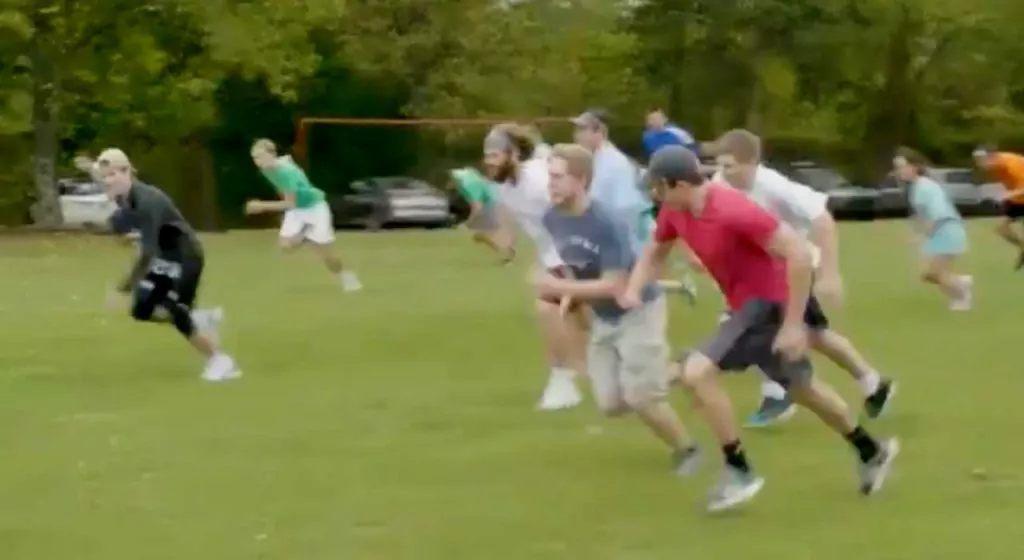by James Buckley Jr. and Izeek Esidene
2020 / 94 pages
Harriet Tubman (1822-1913) was an American black woman born into slavery who escaped the South only to go back again and again to show other slaves the way to freedom. She also served in the American Civil War as both a guide for Northern forces, and as a nurse. Even during the war, she continued making trips to free slaves.
Biographies can sometimes be dry and dusty, but one advantage of this comic-book format is that it allows for an era that survives only in black-and-white photos to be brought to life in full color.
One wonderful surprise in this secular book, was how Harriet is shown repeatedly pleading to, praising, and thanking God. It was made obvious that what she was doing was based on a love for her Lord. She could be brave because she knew she was in God’s hands.
Like the other American-focused editions of this “Show Me History!” series, this comic is narrated by two kids, a boy and a girl, which makes it all the more accessible for early readers. Sam, is actually a young “Uncle Sam” and his friend Libby, clad all in green, is also known as “lady liberty” (aka the Statue of Liberty) and their back-and-forth banter really adds some fun, especially in Tubman’s life, which is otherwise a pretty serious story. This has me excited to check out other titles in the series.
Cautions
In a book in which God is being praised dozens of times, I don’t think it a stretch to presume that the one time someone “interjects” God’s Name that it is been done as a short prayer of thanks. I include the instance here for you to decide. Harriet’s niece Kizzy is escaping and desperately looking for her aunt. On spotting Harriet ahead, Kizzy says to her husband: “I see her, John, oh Lord… I see her!”
Another caution concerns how the book presumes that the South’s secession was a problem that needed to be solved by war. While estimates vary, at least 600,000 soldiers died in the war, or more than 2% of the population of the time. And that doesn’t even include the uncounted number of civilian deaths. Southern slavery was wicked, but Great Britain ended slavery without a war, so it is worth considering if Abraham Lincoln did the right thing. The indivisibility of the country is also worth considering in our own time when up until just recently abortion was legalized nationwide for 50 years, leading to more than 60 million deaths. Might that number have been smaller had pro-life states had the ready option of leaving the union? I will add, though, that the fact this comic doesn’t question the righteousness of the Civil War is hardly unusual, and in that sense, it is not all that notable.
Conclusion
At 94 pages, this has the room to go a lot deeper than most kids’ biographies ever do. I think it’d be great for any kids 10-14 who wanted to learn about either US history, or about some of the Christians who helped fight slavery.
So far, I’ve checked out two others in this “Show Me History!” series.
Benjamin Franklin: Inventor of the Nation was also very good. The man himself is PG-rated – he had kids out of wedlock, and possibly two wives at the same time – so even though the comic only briefly touches on those details, that one might be better for teens than preteens. And, in sharp contrast with the Harriet Tubman title, there’s really no Christian content. But his life as an inventor, printer, diplomat, and one of the American Founding Fathers is quite the read!
Abraham Lincoln: Defender of the Union was also a quick and easy read, but it shares a caution with Harriet Tubman. The book presumes that the Union had to be preserved, even at the cost of 600,000 men’s lives. That’s an especially big part of this book, making it a bigger caution in this case, so I might go with a different comic Lincoln biography: Rick Geary’s The Murder of Abraham Lincoln.















